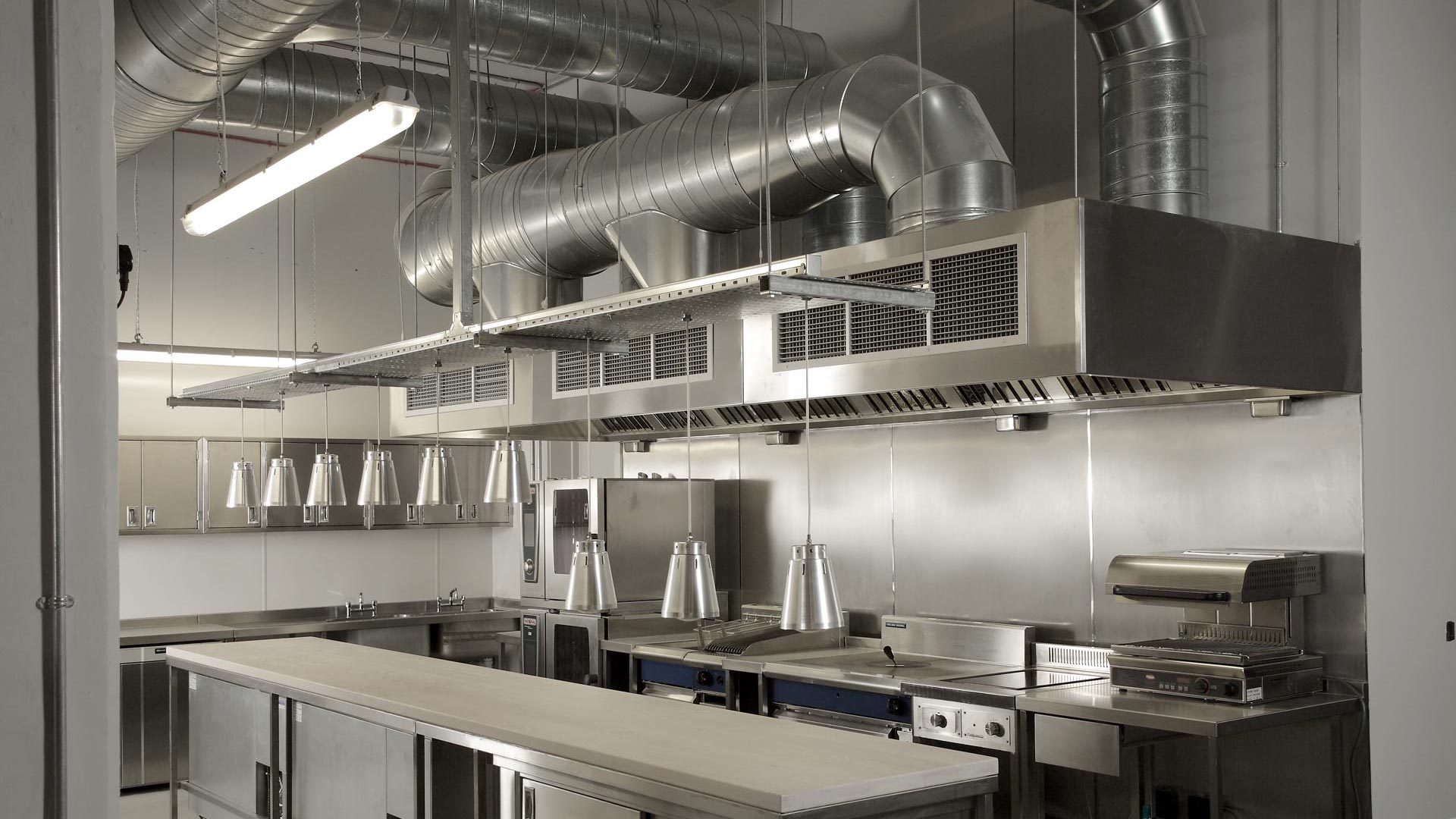Introduction Restaurants use about 2X more energy per sq. ft. than most commercial buildings out there. And most of that

Commercial kitchens are the heart & soul of every foodservice establishment since they provide a way of preparing food for many people in large quantities. Due to this high volume of service, such establishments need proper design, installation, operation, and maintenance of commercial kitchen ventilation design systems. Commercial kitchen HVAC systems effectively manage odors, moisture, contaminants, and grease vapors within the air. They also help to get rid of combustible and toxic gases like carbon monoxide.
Moreover, the restaurant MEP design provides several other benefits, especially when all the components of the ventilation system work together harmoniously. For instance, they help to control humidity, airflow, and temperature. Most importantly, they minimize potential hazards and improve air quality, thus protecting the restaurant’s employees and patrons.
The 2021 UMC (Uniform Mechanical Code) has all the relevant requirements for the safe installation of CKV and exhaust systems!

General Commercial Kitchen Ventilation design requirements
General requirements for CKV systems found in chapter 5, part 2 of the Uniform Mechanical Code are extracted from NFPA 96. They guide commercial kitchen exhaust hoods, exhaust fans, fire suppression systems, grease ducts, and make-up air among others. Unlike domestic kitchens, a commercial kitchen setting must have an appropriately sized ventilation system above the range with an approved exhaust hood.
Exhaust hoods
A commercial exhaust hood and its grease removal devices are some of the most important pieces of equipment within large-scale kitchens. They extract fumes, grease-laden vapors, nuisance odors, and smoke from the cooking area.
2 main types of hoods are used to remove contaminants in restaurant HVAC design systems. That is; Type 1 (grease hoods) & type 2 hoods (condensate hoods). Type 1 hoods are usually installed above cooking appliances/ equipment that produces smoke or grease. While Type 2 hoods are installed above kitchen appliances that produce heat, steam, and products of combustion.
The exhaust system requirements for Type 1 hood are addressed between sections 507.0 and 518.0 of the Uniform Mechanical Code. On the other hand, you can find type 2 exhaust hood requirements in section 519.0, while ‘grease-removal devices’ are discussed in section 509.0.
Exhaust Rates
The minimum general exhaust rates are found in Table 407.7 in UMC 2021 under ‘Minimum Exhaust Rates’. According to this table, commercial kitchens need a minimum exhaust rate of 0.7 cfm/ ft².
However, commercial exhaust hoods have unique exhaust rates, based on the type of hood and appliance. This will also depend on whether the kitchen appliance is categorized as extra heavy-, heavy-, medium- or light-duty. You can find the exhaust rates for commercial hoods using Table 508.5.1.2 – 508.5.1.5.
Make-Up Air
Exhaust systems remove both contaminated and clean air from the kitchen space. Therefore, a supply of make-up air (replacement air) has to be provided as pointed out in section 511.3 under ‘MakeUp Air’.
As the name suggests, makeup air replaces the air that’s extracted from the kitchen space through exhaust hoods. In addition, it prevents the building air pressure from exceeding 0.02” of the water column and dilutes gas temperatures. As a result, the kitchen will be slightly under negative pressure, preventing contaminants and odors from migrating into the adjacent spaces.
Fire Suppression Systems
Commercial kitchen ventilation systems have a higher risk of fire than any other ventilation system. For that reason, the commercial kitchen ventilation design must include a fire suppression system as required by UMC in Section 513.1.2 ‘Protection’.
In addition, Section 513.0 suggests different methods that should be used to protect cooking appliances during operation. Hoods that share common ducts or are installed adjacent to each other require automatic fire protection if the distance doesn’t exceed 75 ft. But if the distance is more than 75 ft, all ducts and hoods should have an independent fire suppression system.
For added fire protection, the Uniform Mechanical Code requires that Type 1 hood exhaust systems end directly to the outside of a building through the wall/ roof via a duct or exhaust fan. Additional termination requirements are in Section 519.5 for Type 2 systems and Section 510.9 for Type 1 systems.
Ducts
Section 510.0 of the UMC addresses how grease ducts/ Type 1 ducts are used as pipework for contaminated/ flammable air to safely move indoor air to outdoors. To avoid compromising a commercial kitchen’s fire rating, ducts should have a continuous enclosure when they penetrate a fire-rated ceiling/ wall. This is explained in Section 510.7. However, this requirement doesn’t apply where a factory-built or field-applied grease duct enclosure is safeguarded with a duct-through-penetration system with the same fire-rating as the assembly being penetrated.
In most cases, multiple Type 1 hoods can share common ductwork. Section 513.3 – 513.3.5 indicates specific requirements for concurrent operation when more than 1 cooking appliance is served by a common duct.
Section 510.1.2 prohibits the interconnection of Type 1 duct systems with other building exhaust or ventilation systems. This prevents cross-contamination of lint, grease, and other pollutants that may accumulate within the exhaust ducts. Type 2 exhaust ducts systems, on the other hand, must comply with the chapter 6 duct requirements as referenced in Section 519.4.
Final Words
To sum up, the Uniform Mechanical Code 2021 provides all the requirements for the safe installation of commercial kitchen exhaust and ventilation systems. Therefore, it’s important to familiarize yourself with these guidelines when operating, constructing, or designing a commercial kitchen MEP system. It will contribute to a clean, efficient, safe, and functional large-scale operation in your restaurant facility. Moreover, the use of UMC 20221 enables both inspectors and installers to be well equipped with the relevant commercial kitchen ventilation provisions and guidelines.
About Author
InnoDez